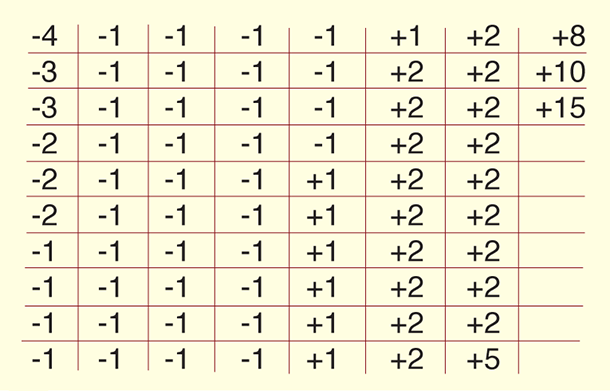
FIGURE 1: R-MULTIPLE SET
MONEY MANAGEMENT
Fixing Your System
Is your system performing adequately? Here is a method you can use to determine minimum expected performance.
I have learned that if you are going to trade, you should trade a system that you have developed using known parameters in which you have reasonable confidence. A trading system is a collection of rules and conditions by which to select, buy, and sell financial instruments. Your goals, psychology, personality, and capital limits are part of the mix of influences that ultimately determine the makeup of the strategies to be implemented. If you are thorough, perceptive, and resourceful enough, you will end up creating a successful strategy.
THE R-FACTOR
Typically, you will backtest your system and come up with a collection of performance results before you start trading your system. One form of performance results is a set of R-multiples, or a distribution, from which a mean R (expectancy or expectation) and a standard deviation can be derived. R means risk per trade. For example, if you bought 200 shares of XYZ at $100 and placed a stop-loss at $95, then R = ($100 - $95) 200 = $1,000. By keeping R equal to a constant dollar amount or a constant percentage of equity for each trade, you can keep a good handle on your risk and have an effective method to track your system’s performance.

FIGURE 1: R-MULTIPLE SET
From these parameters, I will show how you can derive a minimum performance curve and determine the maximum drawdown you can expect as well as the maximum breakeven trade number and the terminal wealth relative (TWR) (the retire point). From that curve and the values described, you can apply a risk level and enhance profitability by using proportional bet sizing and Ed Seykota’s “market’s money” concepts (the difference between current equity and starting equity).